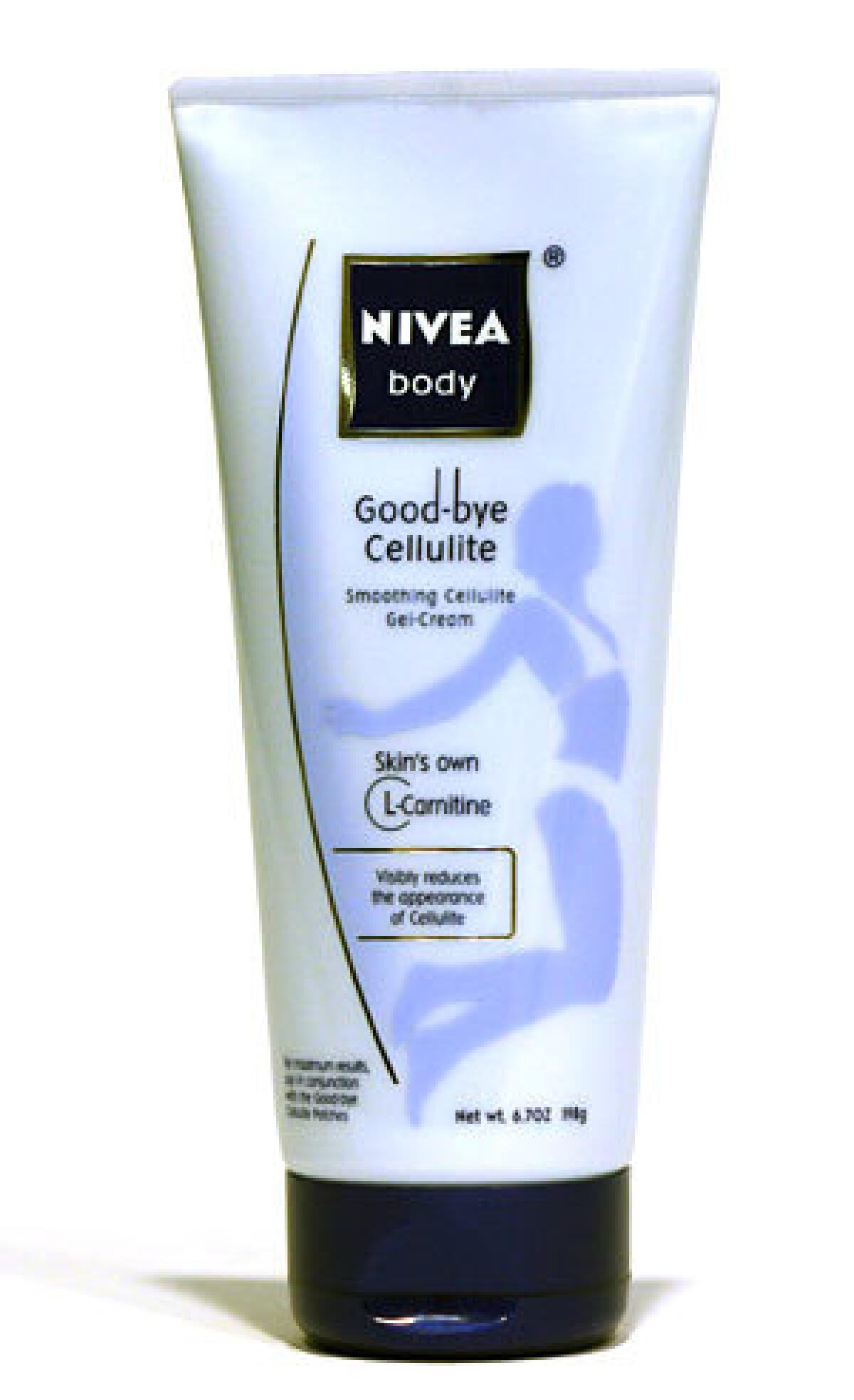Little proof of cellulite cream success

As you may have noticed from the supermarket tabloids -- admit it, you’ve looked -- all sorts of celebrities are still battling cellulite, that unflattering skin condition that can ruin Hollywood reputations while making big money for beach-side paparazzi.
Of course, celebrities aren’t the only ones who worry about cellulite. The dimpled, “cottage cheese” patches of skin show up on women of every shape and body type. Cellulite is so common in women that it could be considered just a natural part of the female package. But in these image-conscious times, it is seen as a problem in need of a quick solution.
Some dermatologists treat cellulite with lasers, radio waves or vacuum massages, but the results -- if any -- are usually temporary and underwhelming. Women who want to get rid of cellulite have another, less-expensive option: cellulite creams that claim to smooth out lumpy skin.
The creams, sold at drugstores and department stores everywhere, come in many different formulas. One of the most popular ingredients is caffeine, a compound that supposedly shrinks fat cells. Revitol Cellulite Solution, for example, contains a highly caffeinated coffee extract along with retinol (vitamin A) and extracts of green tea and seaweed. Nivea’s Good-bye Cellulite gel-cream contains L-carnitine, a natural amino acid that helps cells turn fat into energy. Taking yet another approach, Biobodyslim offers “powerful biological molecular structures” gathered from the mucous of land snails.
Users of cellulite creams are instructed to apply the product to problem areas one to four times a day for weeks at a time.
Expect to pay about $30 for a 4-ounce bottle of Revitol Cellulite Solution. You can buy a 6.7-ounce bottle of Good-bye Cellulite for less than $15. An 8-ounce bottle of Biobodyslim costs about $80. (Snail mucous doesn’t grow on trees, you know.)
The claims: The Revitol website claims that “getting rid of your cellulite has never been easier” and that “in a few weeks, you could be wearing those sexy dresses and skirts without feeling self-conscious.” According to the Nivea site, Good-bye Cellulite will make skin “noticeably firmer after two weeks” and “smoother after four weeks.” The Biobodyslim site says its product “breaks the cellulite curse and rebuilds sexier, slimmer, toned, beautiful skin.”
The bottom line: The concept behind cellulite-reducing creams isn’t completely far-fetched, says Dr. Jenny Kim, an associate professor of medicine and dermatology at UCLA’s David Geffen School of Medicine. Because caffeine and a few other compounds (L-carnitine or snail mucous not among them) have been shown to shrink fat cells in test tube studies, some creams “make sense, theoretically,” she says.
“Theoretically” -- there’s the rub. According to Kim, no studies have convincingly shown that cellulite creams do any good on actual bodies. Nobody knows if creams can penetrate the skin deeply enough to reach fat cells, let alone improve the appearance of cellulite, she says.
A small study published in 2005 opened a little room for optimism. Thirty-four women applied a caffeine-containing cellulite cream to one thigh and an inactive placebo cream to the other thigh every night for four weeks. They also wore neoprene shorts to help the creams soak in. Overall, about two-thirds of women said they noticed some improvement in their cellulite. But more than one-third of those lucky women thought they saw results from the fake cream, not the real thing. Overall, the caffeine cream did seem to work a little better than the placebo, but the researchers didn’t measure statistical significance, a major shortcoming.
For now, Kim says, there’s no reliable, proven cure for cellulite, and for good reason. “It’s very difficult to treat something if we don’t know what causes it,” she says. By one theory, women have a shortage of connective tissue that holds fat together under the skin. Without this, fat tends to bulge outward toward the skin’s surface. Women also tend to have thinner skin than men, making each bulge easier to see.
Creams might still be worth a try, Kim says, because they are generally considered safe and some people do report improvements. She also points out that studies have found a strong placebo effect for cellulite treatments. Thanks to positive thinking, users may think they see improvements even if the cream itself is worthless. They may have as much cellulite as before, but they’ll still feel better about their appearance at the pool.
Not all experts are convinced that the uncertain benefits are worth the cost. “I don’t think the evidence is there to recommend spending money on a cellulite cream,” says Dr. Molly Wanner, a dermatologist at Massachusetts General Hospital in Boston and an instructor at Harvard Medical School. Wanner co-wrote a review of cellulite treatments in the April edition of the Journal of Drugs in Dermatology.
“Never say never, but at this point there’s nothing to suggest that these products can improve cellulite,” she says. That’s because there’s more to removing it than shrinking fat cells. Unless a product can fundamentally change the structure of skin, she says, the bulges will remain.
Woolston is a freelance writer.
Read Healthy Skeptic columns at latimes.com/skeptic.
More to Read
Eat your way across L.A.
Get our weekly Tasting Notes newsletter for reviews, news and more.
You may occasionally receive promotional content from the Los Angeles Times.









